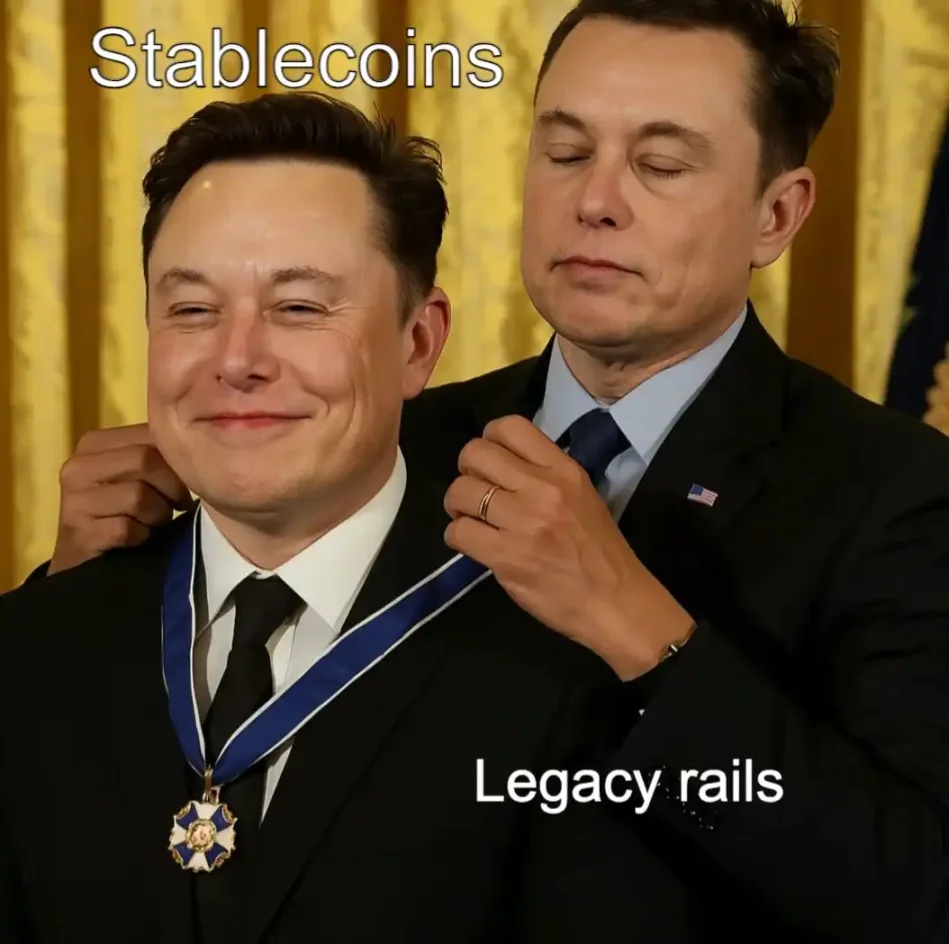Written by: Nathan
Translated by: zhouzhou, BlockBeats

Editor's Note: Stablecoins break through the traditional payment trilemma with "better, faster, cheaper", providing users worldwide with an around-the-clock, low-cost, permissionless open payment network. They are evolving from intermediary tools to mainstream value carriers, and despite facing bottlenecks like fiat conversion, stablecoins are poised to reshape the global financial landscape as network effects expand.
The following is the original content (slightly edited for readability):
[The rest of the translation continues in the same professional manner, maintaining the original structure and meaning while translating to English]The stablecoin ecosystem handles fewer transactions than Visa or PayPal, but the average transaction amount is much larger. In 2023, Visa processed 276 billion payments, with an average of $54 per transaction; PayPal handled 25 billion, averaging $61. Fedwire, in contrast, processed only 193 million transactions, but each averaging $5.6 million. Comparatively, stablecoins processedco 2.6 billion transactions in 2023, with an average amount of $4,200, precisely positioned between retail and institutional transactions.
This passage reveals a key trend: stablecoins currently remain in the "middle zone" - between everyday retail card swipes and large institutional transfers. They have not yet become the default track for processing small, high-frequency payments - Visa card swipes and PayPal clicks still dominate this layer.
However, given stablecoins' obvious advantages in cost, speed, and openness, their further penetration into everyday consumer payment scenarios is just a matter of time.
The World After Stablecoin Widespread Adoption
I have long contemplated and written about how the future stack structure of a "stablecoin-based payment network" might be constructed.
If stablecoins truly become mainstream payment tools, we might witness an entirely new financial interaction paradigm:
Wallet = Account, no bank account needed, global users only require one wallet address for sending and receiving payments;
Smart Contracts = Router, fund allocation, payment splitting, supply chain settlement, automatic execution of financial products, all completed on-chain;
On-chain Identity = Trust Layer, social graph, reputation system integrated with payment system, identity equals credit;
Open API = Application Interface, any product can directly integrate stablecoin payments without intermediary institution permission;
Micropayments will activate long-tail scenarios, from content tipping, creator income, to real-time salary distribution, IoIoT device settlement, gradually becoming normalized.
In other words, stablecoins are not just a "digital dollar", but a key to opening a permissionless, real-time settled, globally interconnected financial new world.
We are witnessing the construction of an era. Are you ready?
However, I rarely delve into the most ideal ultimate vision.
If retail adoption continues continue toentially ultimately arrive at such a scenario:
Stablecoins will a no longer need "seamless cash conversion" as, but directly become the default currency form. Everyone will treat stablecoins as the underlying payment layer, replacing fiat currency for daily settlements.
In this future world:
Value naturally circulates on on-chain,chain,
People become accustomed to transferring, receiving, paying wages, and consuming with stablecoins,>
Merchants,, enterprises, and even governments use will use use stablecoins as their primary currency,<>fiat currencies become "off-chain assets", while stablecoins become the mainstream "money" in real life.
In this "ideal utopiacocompletely triumphed. This is not just a monetary form transformation, but a picture of a decentralized, transnational, real-time programmable financial infrastructure comprehensively replacing the old financial system.
Of course, we have not reached that future. sense the trend's direction:
From marginal players to mainstream adoption, stablecoins are rewriting the ancient question of "what is money"money>
Traditional network effects typically occur within "walled gardens", such as Facebook, Instagram, Monzo, Revolut - the more users, the better the the experience, but the platform is closed.
Stablecoins have disrupted this model: they run on open, permissionless blockains than closed.
But even so, as more people use stablecoins for payments, the overall user experience will continue to optimize: more merchants, acceptance; faster transfers faster, lower fees; wallets, infrastructure, interfaces become more friendly; trust and liquidity continuously accumulate.
Imagine: if every globally could access a borderless, permissionless, low-cost payment network anytime, "quick and cheap remittance" would no longer be a privilege, but a basic human right.








